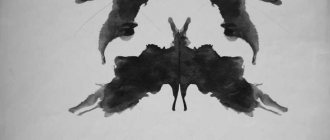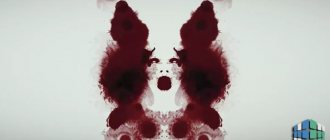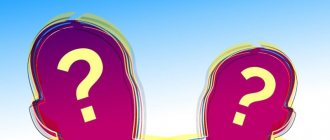The free association method or associative experiment is a special technique for working with the subconscious. Agree, when talking with other people, be it a relative, a friend or, for example, a psychologist, you always control your speech and think about what to say. In this case, you have the opportunity to say anything, any thought that appears in your head at the moment. What does this give? How effective is this approach?
Author and history of creation
Carl Gustav Jung is a Swiss psychiatrist, teacher, and founder of analytical psychology. The scientist considered his main task to be the interpretation of archetypal images and developed the doctrine of the collective unconscious.
The free association test was originally used as a lie detector, because to answer it you don’t need to think or deeply analyze what came to mind. With the help of a test, Carl Jung was able to track a person’s true motivation. If he began to hesitate, then Jung suspected that the subject was trying to hide something. Further, testing began to be used as a way to understand and identify psychological problems; anyone could take it.
Carl Gustav Jung
Memorizing foreign words
In intelligence schools, teaching foreign languages has been put on stream. For experienced teachers, there are no incapable students. A scout is selected based on his mental abilities, and teaching him to speak any language fluently and without an accent is a matter of technique. At the initial stage of language acquisition, the student needs to memorize pairs of words, one of the words is known (in his native language), the other is not (in a foreign language). Use the following algorithm.
1) A known word in the native language is encoded using an image. You are familiar with this technique from the story method.
2) The second, unknown word is easier to encode through phonetic similarity: select one or more words in your native language so that together they are consonant with the foreign one.
3) Connect in one story the image of a word in your native language with images of words that are consonant with a foreign one.
For example, you need to remember the English word “habit” - habit. It is consonant with the name of one of the peoples in Tolkien’s works, hobbits. To remember the pair “habit - habit”, you can imagine a hobbit from a fairy tale, leading a measured lifestyle, not deviating from his habits. A more complex word is remuneration, reward. To remember the correct transcription, it is quite acceptable to replace it with the Russian “remuneration”. How can you remember this? “Young people with a salary go to Rome.” This phrase helps you remember half of the English word and its Russian translation. With practice, you will learn to quickly create similar stories, which means memorizing at least 50–70 foreign words in one lesson.
Exercise
Buy a small dictionary containing 500–1000 of the most common words in the language you have long dreamed of learning. Using the described technique, you will remember them quite quickly, and this will be a good start to fulfilling your dreams.
What does testing for 16 associations give?
In the process of taking an association test, a person will understand which words cause him rejection and which ones cause pleasant emotions. If you feel negative about a word, then there is a problem behind it, and you need to work with it.
During the test, the brain will work very actively, independently transform the images it receives, and rethink them. The resulting associations will help you find the true root of the problem. A person will understand what lies on the surface and what he really thinks about and how he feels in relation to the problem.
Memorizing phrases
The ability to quickly memorize lists of words and create visual stories opens up the possibility of remembering larger amounts of information, in particular phrases and fragments of text. For example, you are being briefed before a new task and you need to remember the password: “Zakhar Borisovich told me to tell you that the cranes will be there next week.” One of the options for the history of such a password will be like this. Leopold Sacher-Masoch (he wrote “Woman in Furs,” so he’s wearing a fur coat) stands hugging Russia’s first president, Boris Yeltsin. Of course, both have a commanding look, because they both enjoyed power (though each in their own way). Sacher-Masoch hands you a bunch of construction cranes. The cranes are wrapped in their delivery schedule - a large sheet of calendar on which the second line is shaded - next week. Now try to forget this phrase.
Exercise
Create visual stories for proverbs, sayings and catchphrases you know.
Rules - how to perform Jung's association test
The most important rule of Jung's test is to be alone, without rush and distractions. The technique will not make sense if a person is not ready to fully immerse himself in the essence and focus on the problem.
To complete the Young test, you only need a piece of paper, a pencil or a pen. Can .
How long does the test take?
It is impossible to say exactly how long the test will take, since all people think and make associations at different speeds. It’s better not to rush, set aside time to complete the Jung test. On average, the passage takes 15 minutes.
Method functions
1. The association method can be an effective way to creatively solve problems and find new solutions, and can also be used to identify all possible signs and properties of the object under study. 2. It can be considered as a heuristic technique used to get rid of traditional, stereotypical connections, undermine stereotypes, develop a completely new view of the problem and achieve originality, freshness, surprise of ideas and solutions. 3. The method of associations acts as a way to expand the semantic space of a problem, obtain unexpected images, concepts and meanings, and highlight new possibilities. 4. The method acts as a way to awaken fantasy and imagination, activate creative thinking in solving various applied problems.
Stages of taking an online association test
You can take the Jung test online, right while reading the article. You just need to take paper and pen, fill out the word series of associations, and then decipher the result together. We are sure that you will learn something new and interesting about yourself and your problems.
The layout that needs to be filled out is in the picture below, or you can. Words can be written without a table on a regular notebook sheet.
Sigmund Freud
If we talk about the method of free association, then it is necessary to mention the one who introduced this method, namely Sigmund Freud. He lived and worked in the second half of the nineteenth and the first half of the twentieth century. He was born in the Austrian Empire in the city of Freiberg, which currently belongs to the Czech Republic. He made enormous contributions to psychology, and his works are still used and appreciated, studied in universities and put into practice, although not as actively as before. He founded a three-component structure of the psyche, introducing the concepts of “I”, “it” and “super-ego”. It was Freud who told the world about the psychosexual phases of human development, he described the protective mechanisms of the human psyche and much more, which as a result developed into a full-fledged psychological and psychiatric direction, which was called “Freudianism.” And it is within the framework of Freudianism that there is so-called psychoanalysis, which shook the world of psychology and psychiatry in its time. Its key component is the method of free association, so we cannot talk about it without talking directly about psychoanalysis as a whole.
What to do after the test - a real solution to the problem
The 16 Association Test only helps a person find out what he needs to work on, but does not solve the problem in any way.
When the test is passed and the results are analyzed, the person needs to formulate the main problems and think through ways to solve them (done independently or together with a psychotherapist). State your findings in writing. To do this, you need to draw up a specific action plan, breaking it down into small goals.
For example, a 40-year-old man analyzed his inner world, realized that he did not like working as an energy engineer, and subconsciously he always dreamed of being a cook. His approximate action plan:
- Find chef courses, sign up, and master the profession.
- Write a resume and send it to cafes and restaurants.
- Meet with the future employer, ask questions, discuss details.
- Make a decision about the place of work.
- Start earning money and enjoying your new profession.
Thank you for reading the article. Do you think the Jung test is useful for working through and finding hidden problems through associations? Share your opinion in the comments.
Save the article so as not to lose this technique, send it to your friends, family and acquaintances. Perhaps the technique will help identify problems and begin to solve them, improving life.
How to write a term paper on speech therapy
07.09.2010 257550
These guidelines are compiled to help students gain an understanding of the content and structure of coursework in speech therapy.
Logopedia of pedagogical science that studies anomalies of speech development with normal hearing, explores the manifestations, nature and mechanisms of speech disorders, develops the scientific basis for overcoming and preventing them means of special training and education.
The subject of speech therapy as a science is speech disorders and the process of training and education of persons with speech disorders.
The object of study is a person suffering from a speech disorder.
The main task of speech therapy as a science is the study, prevention and elimination of various types of speech disorders.
Coursework in speech therapy is a student's scientific and experimental research. This type of educational activity, provided for by the educational and professional program and curriculum, contributes to the acquisition of skills in working with literature, analyzing and summarizing literary sources in order to determine the range of insufficiently studied problems, determining the content and methods of experimental research, processing skills and qualitative analysis of the results obtained. The need to complete coursework in speech therapy is due to the updating of knowledge concerning the content, organization, principles, methods and techniques of speech therapy work.
As a rule, during their studies, students must write two term papers - theoretical and practical.
The first course work should be devoted to the analysis and synthesis of general and specialized literature on the chosen topic. Based on this analysis, it is necessary to justify and develop a method of ascertaining (diagnostic) experiment.
In the second course work, it is necessary to provide an analysis of the results obtained during the ascertaining experiment, as well as determine the directions and content of speech therapy work, and select adequate methods and techniques of correction.
So, let’s present the general requirements for the content and design of coursework in speech therapy.
The initial and most important stage of working on a course project is the choice of a topic, which is either proposed by the supervisor or chosen by the student independently from a list of topics that are consistent with the areas of scientific research of the department.
Each topic can be modified, considered in different aspects, but taking into account a theoretical and practical approach. Having chosen a topic, the student needs to think through in detail its specific content, areas of work, practical material, etc., which should be reflected both in the formulation of the topic and in the further construction of the study. It should be recalled that the chosen topic may not only have a purely theoretical orientation, for example: “Dysarthria. Characteristics of the defect”, “Classification of dysgraphia”, but also take into account the practical significance of the problem under consideration, for example: “Speech therapy work on speech correction for dysarthria”. It should also be taken into account that when formulating a topic, excessive detail should be avoided, for example: “Formation of prosodic components of speech in preschoolers of the sixth year of life attending a preschool institution for children with severe speech impairments.”
The course work includes such mandatory parts as: introduction, three chapters, conclusion, bibliography and appendix.
The text of the term paper begins with the title page . An example of its design can be seen here.
Then the content of the work is given, in which the names of chapters, paragraphs, and sections are formulated in strict accordance with the content of the thesis. An example of its design can be seen here.
In the text, each subsequent chapter and paragraph begins on a new page. At the end of each chapter, the materials are summarized and conclusions are formulated.
The introduction reveals the relevance of the problem under consideration in general and the topic being studied in particular; the problem, subject, object, and purpose of the study are defined. In accordance with the goal and hypothesis, objectives and a set of research methods aimed at achieving the objectives must be defined.
The relevance of the topic lies in reflecting the current level of pedagogical science and practice, meeting the requirements of novelty and usefulness.
When defining the research problem, it is important to indicate what practical tasks it will help to implement in training and educating people with speech pathology.
The object of research is understood as certain aspects of pedagogical reality, perceived through a system of theoretical and practical knowledge. The ultimate goal of any research is to improve this object.
The subject of research is some part, property, element of an object, i.e. the subject of research always indicates a specific aspect of the object that is to be studied and about which the researcher wants to gain new knowledge. An object is a part of an object.
You can give an example of the formulation of the object, subject and problem of research:
– The object of the study is the speech activity of preschool children with phonetic-phonemic speech disorders.
– The subject of the study is the features of intonation speech of children with phonetic-phonemic speech disorders.
– The research problem is to determine effective directions for speech therapy work on the formation of intonation expressiveness of speech in the system of correctional intervention.
The purpose of the study contributes to the specification of the object being studied. The goal of any research is to solve a specific problem. The goal is specified in tasks taking into account the subject of research.
The research objectives are formulated in a certain sequence, which determines the logic of the research. The research objectives are set on the basis of a theoretical analysis of the problem and an assessment of the state of its solution in practice.
The first chapter is an analysis of literary sources, which examines the state of this problem in historical and modern aspects, and presents the most important theoretical principles that formed the basis of the study.
When writing the first chapter, you should pay attention to the fact that the text of the course work must be written in a scientific style. When presenting scientific material, it is necessary to comply with the following requirements:
– Specificity – a review of only those sources that are necessary to disclose only a given topic or solve only a given problem;
– Clarity – which is characterized by semantic coherence and integrity of individual parts of the text;
– Logicality – which provides for a certain structure of presentation of the material;
– Reasoning – evidence of thoughts (why this and not otherwise);
– Precision of wording, excluding ambiguous interpretation of the authors’ statements.
A literary review of the state of the problem being studied should not be reduced to a consistent presentation of literary sources. It should present a generalized description of the literature: highlight the main directions (currents, concepts, points of view), analyze in detail and evaluate the most fundamental works of representatives of these directions.
When writing a work, the student must correctly use literary materials, make references to the authors and sources from which the results of scientific research are borrowed. Failure to provide required references will reduce your coursework grade.
As a rule, in coursework on speech therapy, references to literary sources are formatted as follows: the number of the cited source in the general list of references is placed in square brackets. For example: General speech underdevelopment is a speech pathology in which there is a persistent lag in the formation of all components of the language system: phonetics, vocabulary and grammar [17].
When using quotations, in square brackets, in addition to indicating the source number, the page number from which this excerpt is taken is indicated, for example: Speech rhythm is based on a physiological and intellectual basis, since, firstly, it is directly related to the rhythm of breathing. Secondly, being an element that performs a communicative function, “correlates with meaning, i.e. controlled intellectually” [23, P.40].
However, course work should not be of a purely abstract nature, so you should not abuse the unreasonable abundance of citations. Quoting should be logically justified, convincing and used only when really necessary.
In the second chapter , devoted to experimental research, the organization should be described and the program of the ascertaining experiment should be presented. The survey methodology, as a rule, consists of a description of several series of tasks, with detailed instructions, visual and lexical material, the procedure for completing tasks by experiment participants, and scoring criteria. This chapter also provides a qualitative and quantitative analysis of the results obtained.
When analyzing the results of an experiment, it is necessary to use a scoring system. Examples of various criteria for quantitative and qualitative assessment are presented in the following works:
– Glukhov V.P. Formation of coherent speech in preschool children with general speech underdevelopment. - M.: Arkti, 2002. - 144 p.
– Fotekova T.A. Test methodology for diagnosing oral speech of primary schoolchildren. - M.: Arkti, 2000. - 56 p.
– Levchenko I.Yu. Pathopsychology: Theory and practice. - M.: Academy, 2000. - 232 p.
In order to visually present the results obtained during the experimental study, it is recommended to use tables, graphs, diagrams, etc. Histograms can be used in a variety of ways - columnar, cylindrical, planar, volumetric, etc. An example of the design of tables, figures, and histograms can be found here.
The third chapter provides a rationale for the proposed methods and techniques and reveals the content of the main stages of correctional work.
The conclusion contains a summary of the material presented and the main conclusions formulated by the author.
The bibliography must contain at least 25 sources. The list includes bibliographic information about the sources used in preparing the work. An example of its design can be seen here.
In the application you can present bulky tables or illustrations, examination protocols, observation records, products of activity (drawings, written works of children), notes from speech therapy classes, etc.
The volume of one course work must be at least 30 pages of typewritten text.
In general, coursework in speech therapy is the basis for a future thesis, in which the study of the begun problem can be continued, but from the standpoint of a different approach or a comparative analysis of the disorders being studied in different age categories of people with different types of speech disorders.
The content and format of theses in speech therapy can be found here.
Literature:
1. How to write a term paper on speech therapy: Methodological recommendations. Educational and methodological manual / Comp. Artemova E.E., Tishina L.A. / Ed. Orlova O.S. – M.: MGOPU, 2008. – 35 p.
2. Research work of students in the system of higher professional pedagogical education (specialty 031800 - Speech therapy). Methodological recommendations for completing the thesis / Compiled by. L.V. Lopatina, V.I. Lipakova, G.G. Golubeva. - St. Petersburg: Publishing house of the Russian State Pedagogical University named after. A. I. Herzen, 2002. - 140 p.
Restrictions
The success of the method largely depends on the competence of the facilitator, who is able to create an atmosphere of spontaneity, play and creativity. Otherwise, participants offer stereotypical associations that cannot be a source of original ideas.
The association method is closely related to the methods of bisociations, analogies, metaphors, random words and forced connections.
Topic navigation<< Previous postNext post >>
(Visited 6,121 times, 1 visits today)
Method rules
1. The proposed keyword is a stimulus; it should preferably be a noun and evoke some kind of image. 2. It is necessary to create an atmosphere of spontaneity, play, humor and creativity, conducive to the generation of a rapid flow of free associations among participants. 3. Criticism at the stage of generating associations should be prohibited. 4. Associations should be imaginative, bright, distant, bold, and their change should occur quickly, flexibly and rapidly. 5. It is necessary to write down everything that comes to mind when criticality and logical analysis are turned off. 6. All associations and ideas must be recorded.










